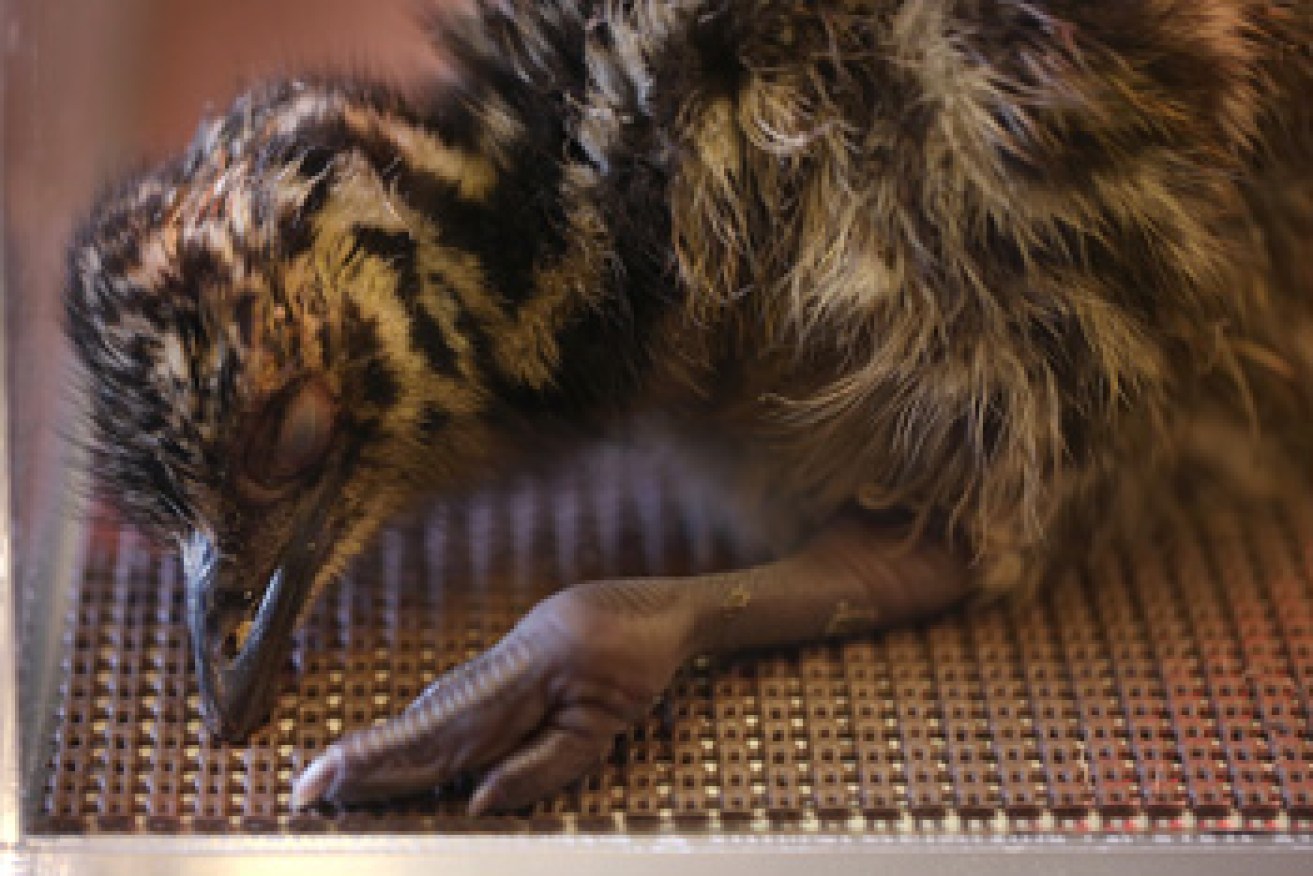All the best dinosaurs looked like vicious chooks


Quake in fear at this living dinosaur. Or not. Photo: Getty
The unearthing of yet another feathery dinosaur fossil in Canada has experts hoping the most persistent dino myth will finally go extinct.
In a new study published in Cretaceous Research journal, University of Alberta undergraduate paleontology student Aaron van der Reest details the discovery of the Ornithomimus dinosaur, complete with preserved tail feathers. Yep, feathers.
“It would’ve looked a lot like an ostrich,” Mr van der Reest said in a statement.
• First glimpse of Omura, the mythical songstress
• This is the story of the greatest shark to ever live
• ‘Supershark’ the size of Jaws found in USA

The Aussie Emu descended from Ornithomimus. Photo: Julius Csotonyi
Ornithomimus, first discovered in 1889, lived approximately 76 to 65 million years ago, was around 4.5 to six metres long and stood around 1.8 to 2.4 metres tall.
According to a leading palaeontologist, this fossil discovery, one of only three feathered Ornithomimus specimens in the world, shed new light on the evolution of dinosaurs and birds, and “has absolutely nailed it that birds are living dinosaurs”.
“Ornithomimus is one of the dinosaurs we’ve known about for a long time, but for the first time we’re able to show that they’ve got tail feathers and soft tissue preserved, so they know what the plumage looked like on the tail and so on,” Flinders University’s Professor John Long told The New Daily.
The finding “cements the hypothesis” that birds evolved from meat-eating theropods, a group of dinosaurs that includes all the popular carnivores we see in the movies, the professor said.
The first feathered dinosaur, Sinosauropteryx, was discovered in China in 1996. Since then, countless other well-preserved feathery specimens have been found, yet Hollywood movies and children’s cartoons refuse to depict them accurately. Probably, as Professor Long said, because “when you put feathers on something, it becomes warm and fuzzy”.
“Without feathers, they remain this cold, reptilian killer and so it makes for a better killing machine.”
According to Jonathan Cramb, a palaeontologist from Queensland Museum, the “spectacular” preservation of feathers and skin impressions in Mr van der Reest’s specimen set it apart from past discoveries.

The latest Jurassic blockbuster definitely didn’t get the memo about feathers.
Findings like this meant that palaeontologists were less reliant on making “educated guesses” when determining what feathery dinos looked like, Dr Cramb told The New Daily.
“The preservation of it is quite spectacular. It’s very rare to find any sort of soft tissue material preserved with fossil bones,” he said.
“We’ve long known that dinosaurs like this had feathers based on some very nice fossils from China.
“We’ve suspected even longer that they had feathers too because they seemed to be very close to the ancestors of birds, but this one shows the layout of the feathers on the body and that’s quite important for reconstructing them.”
For instance, a 2014 discovery of dinosaur fossils in Siberia, which dated back approximately 160 million years, showed imprints from three different types of feathers. It is suggested these may have evolved from reptilian scales as a form of insulation.
We also know from well-preserved specimens in China the actual colours of the dinosaur feathers. Glossy blacks, rusty reds and whites have been detected, according to Dr Cramb.
“They would have been amazing things to see alive.”

Quake in fear at this living dinosaur. Or not. Photo: Getty
Professor Long added that feather pigmentation, just like in modern animals, played an important role in a dinosaur’s environment adaptation.
“Like modern animals, they had colours that suited their particular niche that they lived in,” he said.
“If they lived in the deep, thick forest, the dark colours would be great for a predator to sneak up on its prey … other camouflage colours are also advantageous if you’re a small animal and you’re trying to hide from the big predators.”
There is also hope that the frequency of these feathered discoveries will make an impression in Hollywood, where films like Jurassic Park and the recent Jurassic World left many palaeontologists bitterly disappointed.
Professor Long, who wrote a scathing review of Jurassic Park when it first came out, hoped film makers would choose to accurately reflect the fossil record in future.
“Somebody’s got to do a dinosaur movie where the dinosaurs are actually correct again – like a big T-Rex covered in feathers,” he said.
“That would be great to see.”
—with Jackson Stiles









